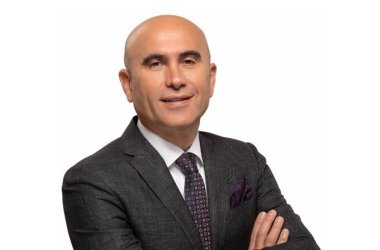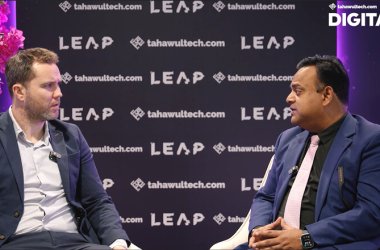Veronica Martin spoke to Lisa Wee, Head of Global Sustainability at AVEVA, during AVEVA World 2023 to discuss the sustainability goals AVEVA has achieved for 2025, the progress made in reducing GHG emissions associated with business travel and the sustainability-specific capabilities they are integrating into their software portfolio.

Could you elaborate on the specific sustainability goals that AVEVA has achieved for 2025 and the progress made in reducing GHG emissions associated with business travel?
We take a materiality driven approach to sustainability. First of all, when we developed our strategy, we looked at what was important for our industry, and we talked to our investors, suppliers, customers and partners to develop that strategy. That’s how we ended up having 15 goals for 2025. Sustainability is a long-term game, so our 2025 goals very often ladder up to 2030 longer term ambitions. That is the case on decarbonization, for example. We think that it’s important to have a couple of milestone targets that we need to hit for the next three years and to communicate transparently on those, but we also need to have longer term goals, which is why by 2030 we’ve made commitments to decrease by half our value chain emissions.
Regarding business travel, we’ve looked at how to continue with the digital solutions we had been using during the pandemic and really questioning where travel was necessary. We obviously need to find ways to come together in person, especially to support our customers, but really being thoughtful about what can get done with digital solutions versus in person. We’re even now looking at trialling carbon budgets within our company to be able to maintain those.
Our goal is a 20% reduction, but ideally, we know that we’d like to stay as low as we can in this area. Our carbon budget will help our teams to prioritize spending in this area, but you need to be selective. That’ll really help people to be selective about face-to-face events. We’ve also looked again at how we can just continue to do in-person virtual meetings and done guidance for our teams when they’re traveling. For example, direct flights actually have a lot less emissions than multi-stop ones because of the take-off and landing associated with that.
Longer term, we will continue to travel, so how do we contribute to incentivizing sustainable aviation fuel and the development of sustainable aviation fuel? We have partnered with the First Movers Coalition and other companies that are interested in leading in this area, but also working with policymakers. Right now, as a company, we can send a very clear signal that we are willing to pay a premium for more sustainable aviation fuel, but there really isn’t enough sustainable aviation fuel to meet that demand. This means when you’re tackling these kinds of issues, you can’t just do it from a corporate perspective. You also have to work with governments to understand what policies might need to be in place to incentivize the production of more sustainable aviation fuel.
In the sustainability report, AVEVA mentions embedding sustainability into its core product strategy. Can you provide more details on the sustainability-specific capabilities they are integrating into their software portfolio?
We think about this from a couple of different angles. We look at our software solutions themselves and how we design them. We work with the Green Software Foundation, for example, to understand the energy consumption of our software itself and to make sure that we are designing our solutions to be as low carbon as possible. We’re very selective about the cloud providers we work with to make sure that where our solutions are running on the cloud, it’s going to be with providers that have made very ambitious commitments around renewables. That’s been a big effort and an area where we found out there weren’t a lot of standards out there.
The assumption is that as we move to the cloud, it’s always going to be greener, but we also wanted to make sure what the best practices are, which is everything from avoiding unnecessary lookups in code to ensuring you’re thinking about the greenest practices in coding from the beginning, especially as the World Economic Forum and others predict that 70% of new value in the next decade is going to be digital.
We have to think about how we design the solutions, but also what our customers can do with those solutions to decarbonize. A lot of what we’ve been looking at is making sure that the solutions are fit for the energy transition. For example, three quarters of the world’s energy is designed with AVEVA Software. As those companies start to transition, how do we make sure the tools they’ve been using for decades can help them? So, we’ve looked at our AVEVA process simulation, which is leading in this space to make sure that it has all the built-in libraries for renewables and the right models for Electrolysers, so as we start to ramp up on green hydrogen, the solutions can support that. We also know certain KPIs are very important to the industrial sector, so we’ve built in dashboards. You could have pulled this information already from the solution, but we templatized and built in key KPIs so when an engineer is looking at their design, they can understand and compare different options and look at the green warming potential of a specific design solution. As our customers and their needs evolve, so does the software.
AVEVA has been recognized as a Europe Climate Leader and has launched a Supplier Code of Conduct. How do these achievements contribute to their overall sustainability efforts?
One of the most exciting, but challenging things about sustainability is that you’re going to have to change outside of your own four walls. We and other companies have been very selective about our suppliers. Do our suppliers share our values? Have our suppliers made the same decarbonization commitments that we have? Because we want to send a very clear signal that we want to work with others that are also contributing to our ambition, which is to support a 1.5-degree future to avoid the worst effects of climate change. That’s where we get into conversations with our suppliers to make sure we understand, even if they aren’t there yet, what they’ve done and how they’re continuing to build to set their own goals and targets.
That’s a trend you’re going to continue seeing in this space. We’re also going to see more technology solutions being used because, if you think about it, I’m going to my suppliers and ask them to provide data. Therefore, it makes sense we can collect that data and share it as seamlessly as possible. AVEVA data hub has been designed to think about that future where we will share information not from suppliers, but also partners and customers. There’s just going to be a lot more sharing of data that’s going to be absolutely required. We’re certainly seeing that in the sustainability space.
Could you share examples of specific customer success stories where AVEVA software has facilitated industrial sustainability?
An interesting subject and how we think about this in terms of the energy transition in particular is that you have to start by decarbonizing what’s existing. Repsol, for example, runs a lot of refining, which is hugely energy intensive. How can they use the solutions that we have, such as AVEVA process simulation to optimize their own utility use? So, an operator would get recommendations on how to run and design their processes in the most effective way. Their refineries have even seen a 20% drop in emissions in that production of their fuels. Companies like Repsol and others have made a commitment themselves to transition, so they’re able to use the savings that they have.
They’re getting more efficient and have savings in terms of their own profitability and in carbon, so how can they reinvest into new solutions in new areas? What technologies are commercially available and viable now? Those are renewables, green hydrogen, carbon capture & storage and synthetic fuels. These are resources that are very distributed geographically, fluctuate and are complex to manage. That’s where digital solutions like AVEVA come in to help making sure you’re able to balance supply and demand, but also provide real-time data.
Dominion Energy is a really good example. They’re a very big player in the US and what they were able to do with AVEVA data hub was to balance that supply and demand when the wind is not blowing with additional sources they need to bring onto the grid. Besides, they were able to provide real-time data on the origins of the energy, which is needed because their customers are making renewable energy of renewable energy, but also net zero commitments, so they need to validate them.
They were able to open up a whole new revenue stream because their customers wanted to know that the data and energy they’re purchasing in a specific time can be timestamped from renewable sources. That’s what you’re going to see in the future. It’s no longer just about making renewable energy commitments, but about 24/7 clean power. Companies that are really ambitious on this space want to show that 24 hours a day, seven days a week, are operating on clean power, which is complicated with the pace the grid itself is decarbonizing.





